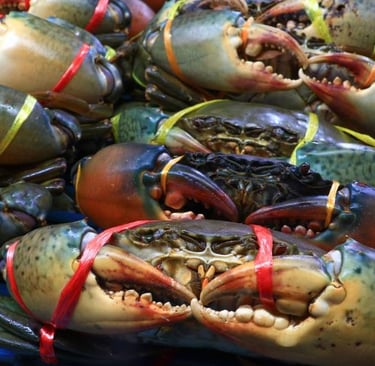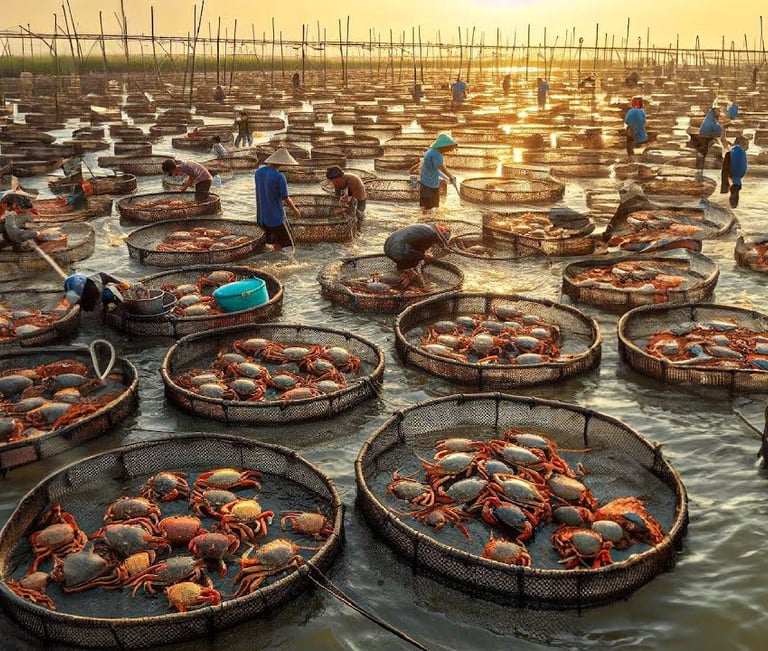Sustainability Practices in Vietnam's Crab Industry: Nurturing the Ocean's Bounty
In the coastal landscapes of Vietnam, the crab export industry is not just about meeting global demand but also about preserving the delicate balance of marine ecosystems. This article delves into the sustainability practices adopted by Vietnamese crab exporters, highlighting their commitment to responsible harvesting and long-term environmental health.
CRAB STORIES


1. Responsible Harvesting Techniques:
Discover the innovative methods employed by Vietnamese crab harvesters to minimize the impact on marine habitats. From trap designs that reduce bycatch to selective harvesting practices, sustainability is at the forefront of the industry's efforts.
2. Protection of Breeding Grounds:
Explore initiatives aimed at safeguarding crab breeding grounds, ensuring the continuous regeneration of crab populations. Preservation of mangroves and other critical habitats is a key focus, recognizing their role as nurseries for young crabs.
3. Community Engagement and Empowerment:
Learn how the industry actively involves coastal communities in sustainability initiatives. Education, training, and the establishment of marine protected areas empower local residents to become stewards of their marine environments.
4. Traceability and Certification Programs:
Delve into the implementation of traceability systems and certification programs that provide transparency in the supply chain. By adhering to international standards, Vietnamese crab exporters not only ensure the quality of their products but also build trust with consumers.
5. Reducing Environmental Footprint:
Examine measures taken to minimize the carbon footprint of crab export activities. From energy-efficient processing facilities to eco-friendly packaging solutions, the industry is adopting practices that align with global environmental goals.
6. Collaborations for Conservation:
Highlight collaborations between the Vietnamese government, non-governmental organizations, and the private sector. These partnerships aim to address broader environmental challenges, including climate change impacts on crab habitats.
In steering towards the future, Vietnam's crab export industry finds its compass in sustainability. Striking a balance between economic gains from crab exports and the preservation of marine ecosystems underscores a dedication to ensuring abundance for future generations. By embracing responsible practices, engaging with local communities, and fostering global collaborations, Vietnamese crab exporters are not merely participants in the seafood market but guardians of a sustainable and robust marine environment.
Vietnam's crab export industry has evolved beyond economic considerations to embrace sustainability as a core principle. In the azure waters that surround its shores, the delicate dance of crabs is intricately woven into the fabric of coastal life. This article explores how the industry is navigating the path towards a harmonious coexistence between economic prosperity and environmental responsibility.


